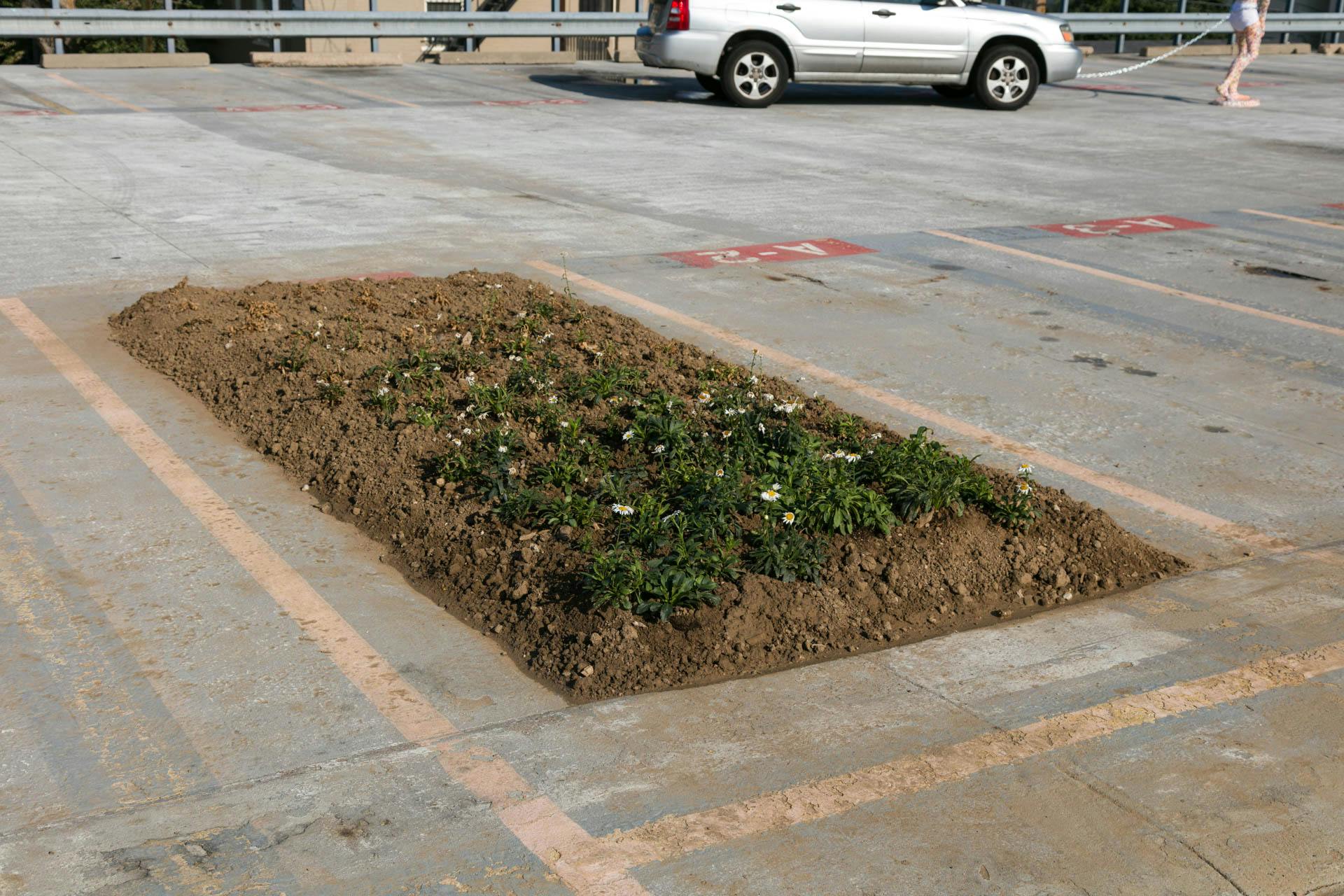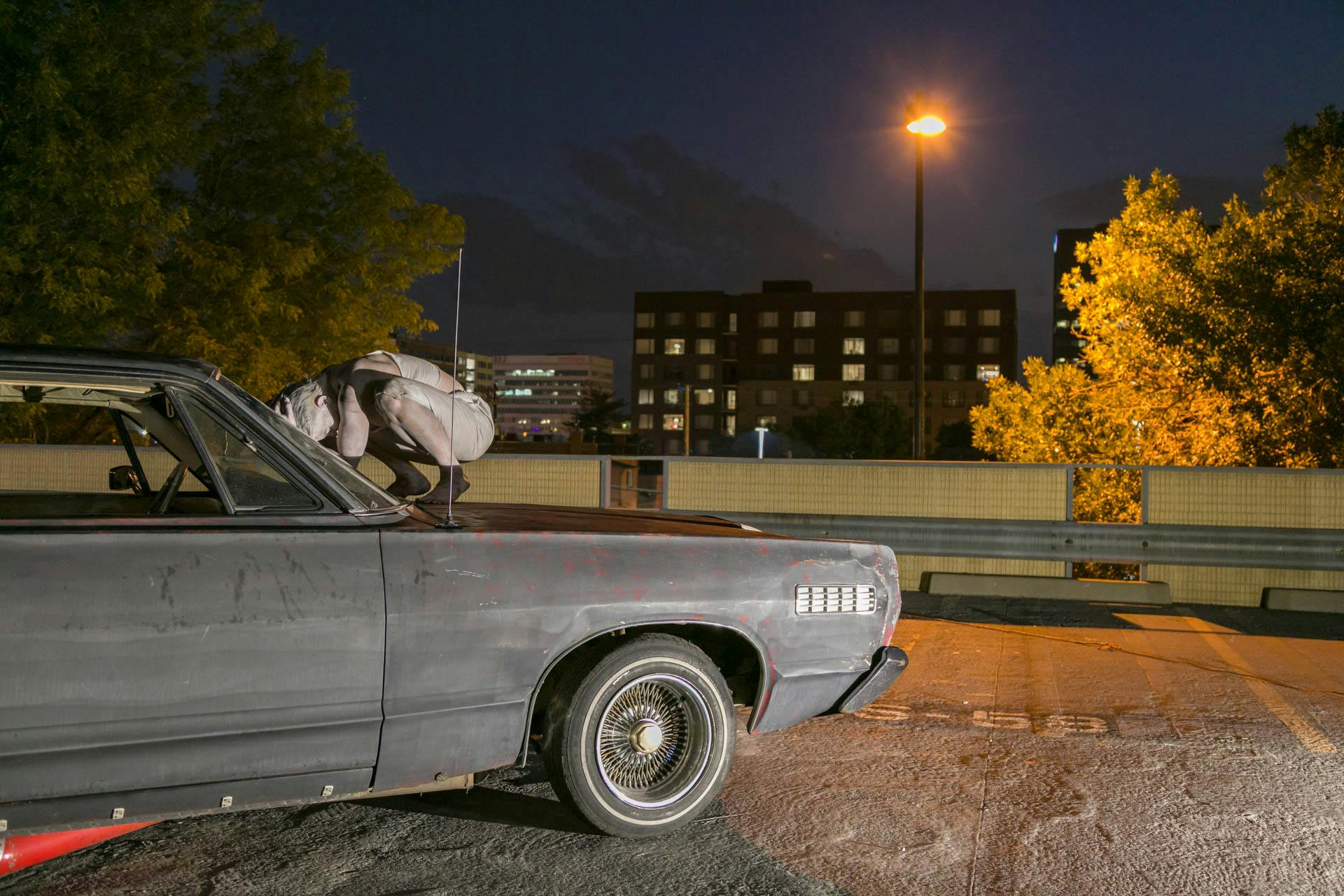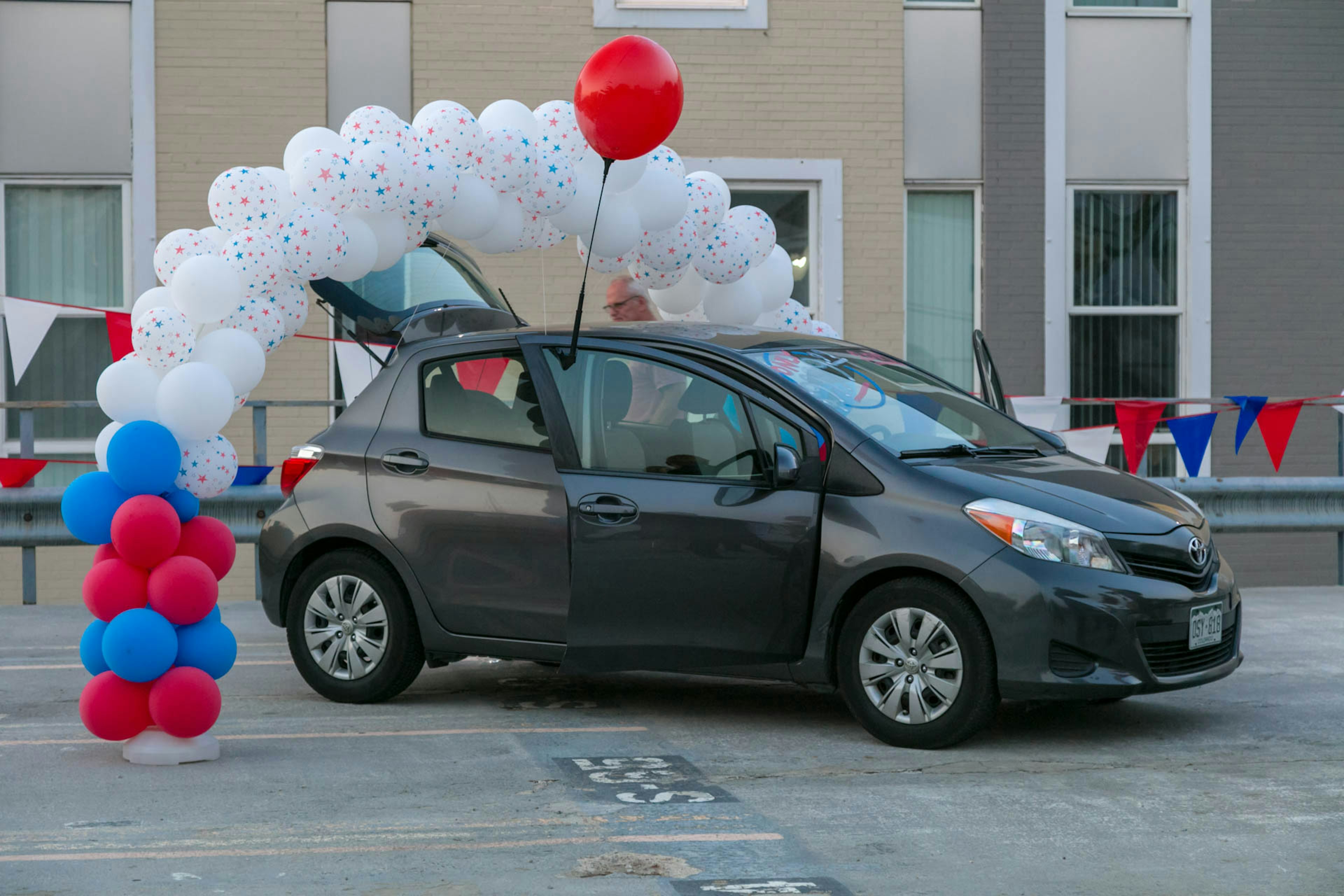6 Artists Discuss Using their Cars as Basis for Contemporary Artworks







We spoke with artists Christopher Coleman, Joseph Coniff, Megan Gafford, Jaimie Henthorn, Marsha Mack, and Sophie Lynn Morris about the artworks they produced for Drive-In: House of Cars, Black Cube’s third exhibition in a series that employed vehicles as a basis for experimental contemporary art.
6 Artists Discuss Using their Cars as Basis for Contemporary Artworks
Drive-In: House of Cars is the third exhibition in a series that employs vehicles as a basis for experimental contemporary art. Titled after a 2010 exhibition at the National Building Museum in Washington D.C. “House of Cars: Innovation and the Parking Garage,” this exhibition reimagines the parking garage as a venue for contemporary art. In preparation for the exhibition this Saturday, we interviewed some of the participating artists (Christopher Coleman, Joseph Coniff, Megan Gafford, Jaimie Henthorn, Marsha Mack, and Sophie Lynn Morris) to get their take on the project as a whole and their work within it.
Back Cube: What will you be showing for the coming Drive-In: House of Cars exhibition?
Christopher Coleman: My Subaru Outback featuring EyeSight® Technology will be “Disney-fied” with a pair of giant eyes in the windshield that will track and follow everyone who walks by. The eyes will react differently with different numbers of people, which relates to how the car might deal with the moral quandary of the Trolley Problem. Our technologies are making their way into our lives by pretending to be childlike, obedient, and helpful – all while making decisions for us that can change, and even end, our existence.
BC: How did you approach the curatorial challenge of using a vehicle for an artwork?
CC: Even though my car is a very practical and common vehicle, I was still able to draw inspiration from it regarding a topic that I care about – namely, ethics in technology. I was especially inspired by the way the other artists in the group were talking about their projects, and so I thought back to my personal fascinations with my car when I first bought it; fully loaded with the best computer vision and driving assistance that 2015 had to offer. Realizing that my car now had a pair of cameras and a computer that had control over my gas and brake pedals, in addition to giving me advice about lane drifting and obstacles was mind-bending. I quickly understood how its helpfulness and gentle braking nudges were just small steps into a future where my car will have complete control.
BC: How do you think experimental exhibition opportunities, such as this one, relate to your larger practice?
CC: Time and time again, I have seen that in the midst of doing months or even years-long projects, I need quicker and more "out of comfort zone" projects to assure I remain nimble in my practice. More importantly, these quick experiments often evolve into longer-term artworks in the future. Of course, they might also be tests for directions I will never take, but needed to express in order to fully understand the impulse and inspiration.
Black Cube: What will you be showing for the coming Drive-In: House of Cars exhibition?
Joseph Coniff: A 1925 Ford Model T pickup truck featuring a 60in television nestled in the bed of the truck. The television will be looping a sound filled video made up of appropriated content from 2018 Ford Truck television advertisements.
BC: How did you approach the curatorial challenge of using a vehicle for an artwork?
JC: 2025 will mark the one-hundred-year anniversary of the Ford pickup truck. Ford introduced their first truck model in 1925. For this exhibition, I'm interested in the evolution of the automobile. Automobiles are key fixtures in our western way of life and hold within them an enormous amount of information as to who we were and to a large extent who we will become. Automobiles are mobile indicators of class, personal advertisements, and to many – a direct extension of identity. I feel a critical look at these objects is important. By analyzing their impact, we’re able to gain a greater understanding of who we are and how we're evolving as a species.
BC: How do you think experimental exhibition opportunities, such as this one, relate to your larger practice?
JC: Generally, I work as a studio artist – creating paintings, sculpture, and works on paper. This exhibition provides a chance for me to convey some of my interests (cultural evolution, conditioning, history of materials and objects) in different forms than what usually emerge from my studio. One of the aspects of art making I enjoy most is the challenge of relaying ideas into form. The Drive-In exhibition has offered a different set of criteria for me to work with. I’ve enjoyed being taken out of my norm and feel experimental exhibitions like this one are important for artists growth.
Black Cube: What will you be showing for the coming Drive-In: House of Cars exhibition?
Megan Gafford: I’ll be filling a parking space with dirt and planting daisies in it, so that the flowers are arranged from living to dying to dead. The daisy patch will be a gradient, from lush to withered. In this way, a resting place for cars will resemble a resting place for people, who push up daisies from the grave. This piece is titled after a poem that I became preoccupied with after I was hit by a car, “When Death Comes” by Mary Oliver. In it she writes, “I think of each life as a flower, as common as a field daisy, and as singular.”
BC: How did you approach the curatorial challenge of using a vehicle for an artwork?
MG: I chose not to use a vehicle, although perhaps something like the ghost of a car hovers around the artwork. Instead, I used the preoccupations with mortality that vehicles give me to make this piece. My car accident was a lesson in vulnerability at a young age, when death had seemed so far away. Sometimes I’ll try to imagine what it’s like to cease existing and it makes me feel sick, like the blood in my veins is flowing backwards. To me, vehicles in city streets are omnipresent reminders that death may come at any time.
BC: How do you think experimental exhibition opportunities, such as this one, relate to your larger practice?
MG: The daisy plants in this exhibition are from my larger practice, from an artwork titled Pushing Daisies. For that series of sculptures, I’m dosing daisy seeds with radiation to grow mutant flowers like those found near the Fukushima disaster site, which resembled caterpillars or conjoined twins. They reminded me of the infamous campaign ad from President Lyndon Johnson of a little girl counting daisy petals until a nuclear explosion engulfs the TV screen. The cartoonish and childlike daisy is a potent symbol of innocence, or in this case, innocence corrupted. I encapsulate my mutant daisies in resin and glass to preserve them as sculptures that beautify these chilling associations, mingling elegance with eeriness.
As Susan Sontag put it, there was a "...trauma suffered by everyone in the middle of the 20th century when it became clear that from now on to the end of human history, every person would spend his individual life not only under the threat of individual death, which is certain, but of something almost unsupportable psychologically -- collective incineration and extinction which could come any time, virtually without warning."
Both Pushing Daisies and When Death Comes are largely inspired by the fear of death. I resent my mortality for all of the books I’ll never read and the films I’ll never see, for the places I’ll never visit and the events I’ll never experience, for the artwork I’ll never make and the words I’ll never write, for the people I’ll never see again and the ones I leave behind.
Black Cube: What will you be showing for the coming Drive-In: House of Cars exhibition?
Jaimie Henthorn: A 1967 Mercury Monterey will be the site for a Butoh-influenced performance. The Mercury is situated within the context of the parking lot, which is positioned within the larger context of Denver. Paradise was paved for a parking lot and now parking lots are raised for gentrified living. The performance considers Denver’s rapid growth as it is architecturally and socially being demolished and transformed. The 1967 Mercury is a reminder of an era now gone, and the macabre Japanese dance form of Butoh speaks to the hard emotions and realities of this rapid change.
BC: How did you approach the curatorial challenge of using a vehicle for an artwork?
JH: My work is a performative interplay between architecture and the moving human body. Always site specific, the architecture is the starting point of every piece. And so, the parking lot informed all of my decisions. The two-story parking lot inspired the work's theme – the phenomena of Denver parking lots being sold to developers. The car and the performance developed from there.
BC: How do you think experimental exhibition opportunities, such as this one, relate to your larger practice?
JH: It is one thing to conceptualize, discuss, and map out an artwork and quite another to actually create and show something that is still experimental. Each of my pieces builds on the one before through lessons learned and new territory discovered. An experimental performance accelerates that process for me, in that the project is expected to be created quickly – less think, more do. This is a refreshing change of pace and, for me, offers the same learning and growing opportunities for my larger practice.
Black Cube: What will you be showing for the coming Drive-In: House of Cars exhibition?
Marsha Mack: New Car, New You. is an installation and performance-based work in which I will use the aspirational language and star-spangled aesthetic of automotive companies and used car salesman with the projected goal of selling my 2014 Toyota Yaris. Complete with a balloon arch, pennant banner flags, and a once in a lifetime bargain price, I will have my car title in hand, ready to sign over my Magnet Grey Metallic beauty to one lucky new car owner. The performance of New Car, New You. can be yours for the low cost of only $9,999.99 – and I’m paying the tax! Under the hood of this piece the breakdown is as such: New Car, New You. is a performance of me selling my car, which if purchased, I will throw in the Toyota Yaris featured in the performance, free of cost.
BC: How did you approach the curatorial challenge of using a vehicle for an artwork?
MM: I often rise to the challenge of curatorial parameters; I see potential roadblocks as a way to problem solve and push concept and form. American car culture is unique in its centrality of the formation of personal identity and sense of self. I have long been fascinated by the ability of advertising language to sell lifestyles and ideas that are attributed to certain brand name products. Is a Dodge Ram owner really that different than someone who owns a Subaru Outback? Can a Ford Truck Man be a woman? Can you be a passenger and a driver on the road of life? Questions like these both entertain and inspire me to create works that play with cultural norms and associations. My practice is quite fluid, with materials and metaphors constantly changing and blending. Focusing on my car as a basis for creating a work prompted me to consider not just the appearance of a car, but its function to individuals in society. How do cars function in our culture, what do they mean to their owners, and how and why people come to select and bond with their vehicles became important questions while creating New Car, New You. Using the car as the cultural symbol to apply to my creative process has opened the door to further explore an iconic, idyllic, and wrought American industry in a globalized economy.
BC: How do you think experimental exhibition opportunities, such as this one, relate to your larger practice?
MM: Because my artistic practice is largely project-based and not medium specific, I interpreted the task of working with a car at the center of my piece as a way to explore concepts that I had a preexisting interest in; it didn’t feel like a stretch or a compromise. I am always thinking of ways to create immersive works that incorporate scent, performativity, and charged materials to drive concept, and Drive-In: House of Cars provided the perfect avenue for me to further explore ideas surrounding subjective experience, cultural critique, and humor.
Black Cube: What will you be showing for the coming Drive-In: House of Cars exhibition?
Sophie Lynn Morris: My piece is titled Care Package Distribution Vehicle (C.P.D.V.). It's based on a USPS truck, but the operating service is SLMPS, which are my initials. The work includes the vehicle, packages, a performance that happens throughout the duration of the event, and a website (www.slmps.com), which gives more information about the service.
BC: How did you approach the curatorial challenge of using a vehicle for an artwork?
SLM: I started by thinking about my own vehicle. I’m currently borrowing a car from my parents – a beige RAV4. I have very little connection to it. I treat it like a truck. I drive with all the seats down and use it mostly for utility. This project had me thinking about my dream car, a Grumman LLV, which is a small USPS fleet truck. It's the ultimate vehicle for "being of service" and bringing things place to place because it's not too big, but you can fit a lot of stuff in it. I had been making sculptures related to the theme of care taking, and so it made sense to combine that with my dream car for this show. I ended up borrowing a stepvan from a generous person on Craigslist. I'm interested in the faux corporate disposition; Jeff Koons and Tom Sachs play with it a little bit in the way they present their work – so, this piece utilizes the performative aspect of customer service.
BC: How do you think experimental exhibition opportunities, such as this one, relate to your larger practice?
SLM: In the studio, my focus is often making autonomous objects that stand alone and "make sense"; they are pretty much devoid of context and speak their own material language amongst themselves. This project was the opportunity for my sculptures to be functional, which is how I think of them (they are about utility and usefulness). But, there is a barrier to their functionality because they are also art, and you're not supposed to use or take apart a sculpture; plus, the objects themselves tend to play around with their own helpfulness. The word "distribution" in the title is important. This piece will include about 100 sculptures, almost all of which were made in the last month. They range in size – from matchbox-scale to 5 feet tall. I will be selling the sculptures out of the back of the truck; so, they are going to be half sculpture and half product. I'm creating a way for the public to interact intimately with sculpture via buying it and holding it in their hands, and considering its utility in their own personal context. My goal is that the product side of the work will make the purchaser frustrated or dissatisfied. Something like: "Hey, this was supposed to be a care package!", which reflects my feelings on care taking in general.
